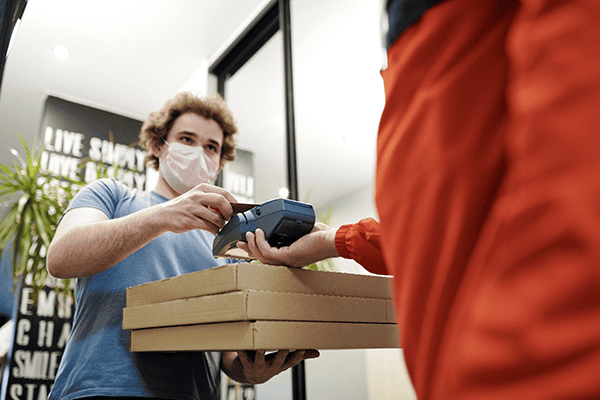Resilience Through Adaptation
How Restaurants Thrived Amidst Unprecedented Challenges
The restaurant industry has weathered its way through natural disasters, recessions, world wars, and currently, the COVID-19 pandemic. The past 12 months have upended most businesses with restaurants bearing the brunt of the hardship.
But even though most headlines over the past year spelled doom and gloom for the industry, many restaurants were able to adapt and innovate at an accelerated pace, showcasing their resiliency in the process. For many restaurants, it meant a shift toward bolstering off-premise. This shift was most dramatic in full-service restaurants.
“Before the pandemic, only about 14% of all sales in full-service restaurants were for off-premise consumption,” shared Victor Fernandez, vice president of insights and knowledge at Black Box Intelligence™. “By the end of March and through April of 2020, full-service suddenly found itself in a scenario in which more than 85% of all their sales were going through off-premise. This meant a complete rethinking of how they would operate their restaurants and technology played a vital part in making that transition work.”
Most restaurants experienced doubling or tripling of off-premise business, perhaps some quicker than others. The digital innovation taking place in the restaurant industry extends well beyond off-premise consumption, to find consumers where they are and into the dining room.
The most resilient brands had a strong digital footprint to begin with and were able to leverage existing technology and focus on maximizing the guest experience through digital channels.
We were in a very favorable position when the pandemic began, and we feel like we continue to be ahead of the curve in delivering a seamless guest experience and having a 360 view of our guests.
In February 2020, we completed a major three-year investment that integrated our in-restaurant, e-commerce, and loyalty platforms to deliver a seamless guest experience. This put us in a good position to quickly react and shift to an all-off-premise business model when the pandemic forced the shutdown of our dining rooms. Then, rather than needing to scramble to quickly build out a platform, we were able to focus on incremental improvements to the guest experience to make it even more seamless, like enabling gift card payment and curbside check-in, which were two of the biggest friction points for both our guests and operators.
We were also able to make improvements in the back of the house to improve the flow of the order from online order receipt through packaging and handing off to the guest. Simplifying the whole process has proven effective and has resulted in improved guest satisfaction scores.
Pivoting for the Long-Term Success
Companies that are the most resilient understand that they can’t just pivot in the near term but must make sure their key strategy will work for the future. Starbucks, for example, executed its pivot by reimagining what it meant to be the “third place.” Dining rooms were stripped of tables and chairs, the messaging on their website evolved and they leaned into their loyalty program and digital experience, dialing up drive-thru and to-go orders. This pivot began before the pandemic, although these changes to their operations certainly contributed toward helping guests feel safe while ordering from them.
“We see brands making strides to enhance their digital channels with a focus on safety and a frictionless experience. This started somewhat out of necessity but will have lasting effects long after this pandemic is over,” said Kelli Valade, president and chief executive officer at Black Box Intelligence. “As a restaurant operator, you couldn’t interact with your guests in the same way once people started sheltering in place. On top of figuring out how to do so, you have to consciously teach people how to engage with you using these new channels. Some really strong brands figured this out early on, and it’s helped to simplify the lives of their front-line employees as well as their customers.”

Embracing Technology and Data-Driven Insights for a Resilient Future
These leaps in digital innovation by the restaurant industry not only serve the purpose of providing a seamless guest experience, but they can also help offset some of the challenges related to staffing. Flippy the Robot is a great example of technology that can be implemented in the kitchen to help take some of the pressure from waged workers. Robotics and kitchen AI can serve to help simplify the lives of everyone, from back-of-house employees by making it a safer, work environment, from grill-related incidents, for example as well as for customers by having less human contact with food and a frictionless experience.
In addition to technology that eases operations, resilient operators are leveraging their data and analytics to remain competitive. Keeping up with guest feedback on your own as well as other brands provides a clear picture of sentiment, along with having a solid understanding of sales performance as it relates to competitors and the rest of the industry. More urgently, brands are using workforce data to help build their value proposition toward finding and keeping good workers. We can speculate on myriad reasons for the staffing shortage but ultimately, knowing how your wages and benefit offerings compare to everyone else will be key.
It might not even feel like we are making big leaps as an industry, while everyone is still dealing with constant pressures coming from all directions. However, the industry has made considerable progress, with the strong brands able to come out and accomplish amazing things and others coming from behind to be innovative and do good with everything they have. Simplification for operators is still the name of the game, and there will soon be a time to build on top of all of this streamlining to take the restaurant industry to a new, exciting place.
